iMessage vs SMS: A Complete Comparison Guide
Texting is one of the simplest methods of communication in our daily lives. However, not all messages are created the same. If you are using an iPhone or Mac device, you surely understand that some messages are displayed in blue bubbles, while others are shown in green. This color difference indicates what type of message is being sent, either an iMessage or SMS.
In this article, we will cover in detail iMessage vs SMS, how they function, and what differentiates them. Also, we’ll highlight the best summary for using each messaging service separately.
Part 1. What is iMessage?
iMessage is Apple’s texting service that works over the internet instead of regular cell networks." It is only available on iPhones, iPads, and Macs. To send an iMessage, you must be connected to Wi-Fi or mobile data.
When both you and the recipient are using iMessage, your messages will show up in blue iMessage bubbles. If the other user has an Android phone or turns off iMessage, your iMessage will automatically switch to a standard text message shown in green.
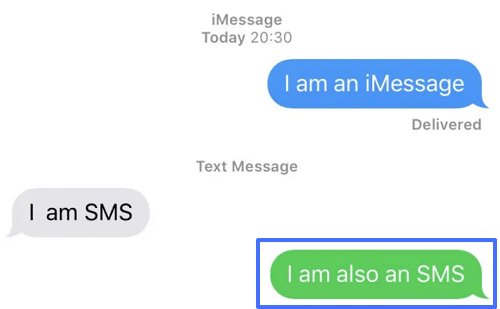
Key features of iMessage
- Only works on Apple devices (iPhone, iPad, Mac)
- Needs internet (Wi-Fi or mobile data)
- Sends photos, videos, files, voice notes, and text
- Shows blue message bubbles
- Read receipts and typing indicators
- End-to-end encryption
- Syncs across Apple devices
Part 2. What is SMS?
SMS (Short Message Service) is an older text messaging protocol that works on every mobile device. It does not require an internet connection and sends messages through cellular networks. Because almost every mobile supports SMS, it is a global communication method.
As opposed to iMessage, SMS has a 160-character limit. If you use emojis or special symbols, your message might get broken up and sent in pieces. For photos and videos, MMS (Multimedia Messaging Service) is required, though it has strict limitations as well.

Key Features SMS
- Works on all mobile phones
- Doesn’t need internet
- Limited to 160 characters
- Sends basic texts (media requires MMS)
- No read receipts or typing indicators
- No encryption
Part 3. iMessage vs SMS: Key Differences
If you’ve ever wondered what is the difference between SMS and iMessage, the differences are primarily features, security, and internet use.
| Features | iMessage | SMS |
|---|---|---|
| Compatibility | Apple devices only | All mobile devices |
| Internet Required | Yes | No |
| Message Bubble Color | Blue | Green |
| Media Sharing | High-quality photos, videos, files | Limited (via MMS) |
| Read Receipts | Yes | No |
| Typing Indicators | Yes | No |
| Encryption | End-to-end | None |
| Character Limit | Unlimited | 160 characters |
| Cross-Device Sync | Yes | No |
| Cost | Uses data (free on Wi-Fi) | Cost per message |
Part 4. Pros and Cons of iMessage and SMS
| Features | iMessage Pros | iMessage Cons | SMS Pros | SMS Cons |
|---|---|---|---|---|
| Compatibility | Great for Apple users | Only works on Apple | Works on all phones | Lacks modern features |
| Media | Sends large files, good quality | Needs internet | Works without internet | File size limits |
| Privacy | Fully encrypted | Not available on Android | Simple, easy | Not encrypted |
| Features | Read receipts, typing indicators | Not universal | Good for emergencies | No advanced features |
| Cost | Free over Wi-Fi | Data charges may apply | Included in most plans | Carrier fees may apply |
Part 5. When to Use iMessage or SMS
Imagine you’re talking with a friend; everything seems fine with blue bubbles. The next message you send shows up as green. What happened? They could have turned off iMessage, lost connection, or switched to using an Android. It perfectly explains the iPhone green text vs blue text phenomenon, blue means iMessage is on, and green indicates the system reverted to SMS messaging.
When to use iMessage:
- You wish to chat with someone who uses an Apple device.
- To avoid international SMS charges.
- When it comes to sharing large videos and photos.
- Appreciate read receipts and syncing across devices.
- Need privacy and wish to keep interactions encrypted.
When to use SMS:
- The contact you are texting uses an Android device.
- You have no access to the internet.
- Want a one-size-fits-all solution that works everywhere.
- It’s an emergency, and quick delivery matters
Part 6. Why Families Need More Than iMessage or SMS
iMessage provides secure, encrypted messaging, and SMS has a wider reach; however, both services lack the control features parents need to protect their children. These applications don’t include the ability to track, filter, or control message interactions and screen time.
AirDroid Parental Control is a contemporary solution for families seeking the balance between connectivity and safety.
Family Chat: Safe and Private Communication
Parents can invite trusted participants to a private family group which they can monitor and control. This group has the capability to send text and voice messages, share files, send photos and videos, and even make calls—all in a secure environment. Family Chat allows parents to control who joins the conversation and even remove children from the chat when necessary.
Monitor Calls & SMS: Protecting Communication
With AirDroid, parents can keep track of calls and SMS on their child’s Android phone. You can set up call whitelists and blacklists that somehow prevent spam and unwanted calls. To make things better, you will receive real-time notifications of flagged sms texts containing sensitive words to assist you in detecting possible bullying or threats and unsafe interactions.
Why It Matters
Neither blue iMessage bubbles nor the green SMS texts come with such safety features. That is why apps like AirDroid are so important – they allow parents to ensure that while they keep an eye on their children, the kids cannot be exposed to strangers, spam calls, harmful content, and other potential dangers. This is indeed the additional layer of protection that every family requires in this digital age.
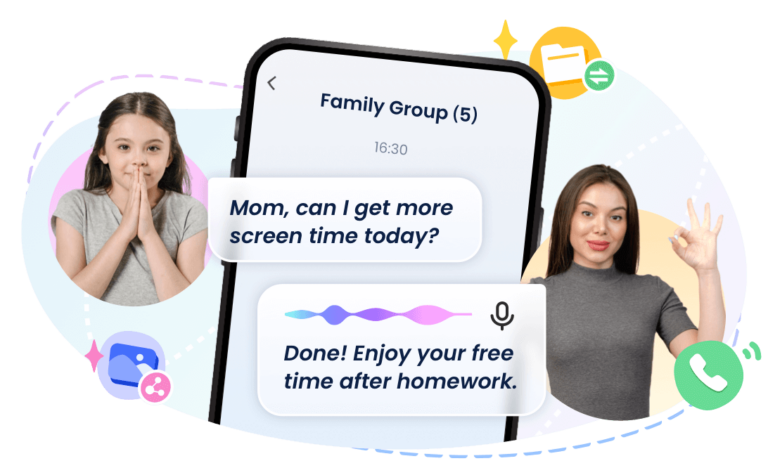
Part 7. How to Disable iMessage on iPhone
If you are switching to an Android phone or experiencing issues with receiving messages, disabling iMessage may help ensure your messages aren’t lost. To do this, follow these steps:
- Step 1. Open the Settings app on your iPhone.
- Step 2. Scroll down and tap Messages.
- Step 3. Toggle the switch next to iMessage to the off position.
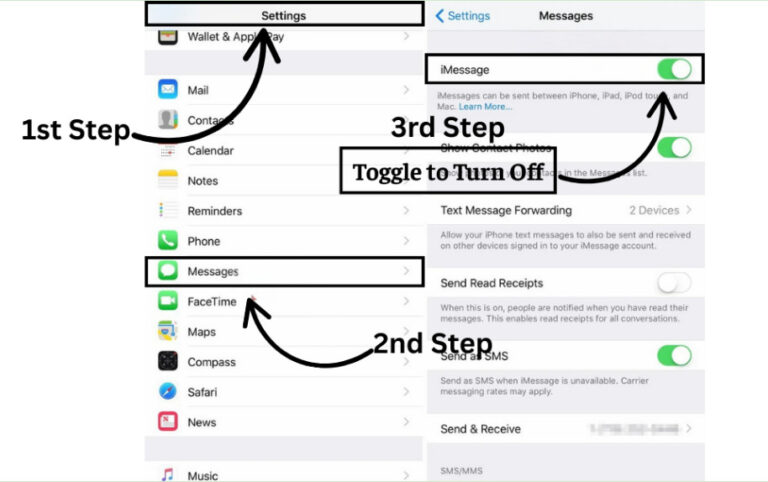
Once disabled, your messages will be delivered via SMS. If you are searching for how to disable iMessage on iPhone, especially when switching to other devices these steps can be helpful.
Conclusion
Knowing the difference between iMessage and text allows you to make informed decisions about what works best for you. For users of Apple devices who wish to enjoy secure messaging with rich features, iMessage serves well. For ease of use, broad compatibility, and no reliance on internet, SMS is preferable.
For parents, it is wise to look beyond just these two apps. AirDroid Parental Control allows you to supervise your child’s contact list, controlling who they can communicate with, what they can share, and whether any questionable content can show up.
FAQs











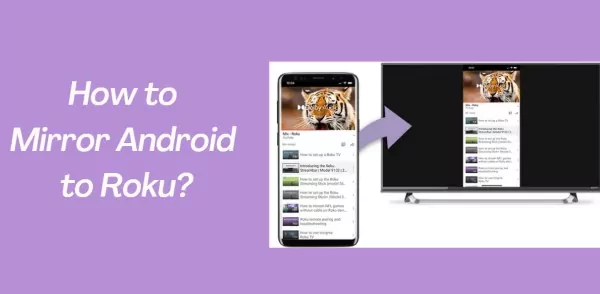
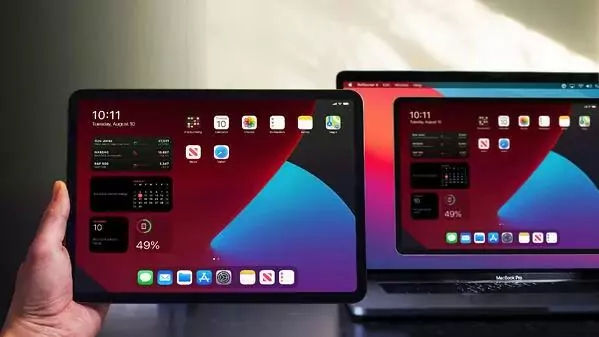

Leave a Reply.